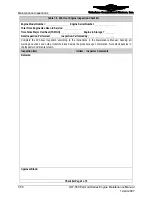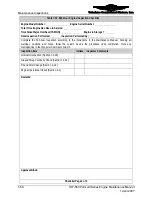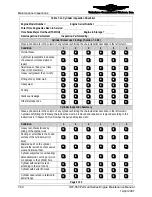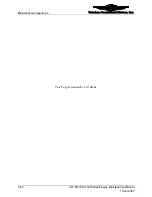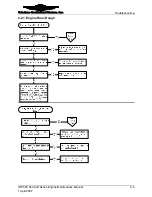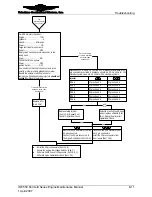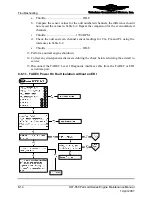
Teledyne Continental Motors, Inc.
TM
Troubleshooting
IOF-550 Permold Series Engine Maintenance Manual
8-3
1 April 2007
8-1.
Overview
The Troubleshooting Charts in this chapter discusses symptoms, probable causes, and
appropriate corrective action to be taken. Troubleshooting procedures for specific
systems and components are provided after the general troubleshooting chart.
WARNING
Any attempt by unqualified personnel to adjust, repair, or
replace any parts may result in engine malfunction or failure.
Operation of a malfunctioning engine can cause further
damage to a disabled component and possible injury to
personnel.
Do not return an engine to service unless it functions according
to specifications.
FADEC engines incorporate enhanced diagnostic capabilities. A technician with a
personal computer, PowerLink FADEC Level I Diagnostics software, and an interface
cable can monitor sensor status and Electronic Control Unit activity from the aircraft
cabin throughout the Engine Operational Check. The Level I Diagnostics may also be
used to validate the engine gauges. If the optional engine data interface (EDI) is installed,
the EDI constantly monitors engine parameters whenever power is applied to the FADEC
system and engine speed is greater than 300 RPM until power is removed. TCM
classifies engine diagnostic in four diagnostic levels.
The Level I diagnostic software is shipped with the engine. Refer to “Publication Access”
in Chapter 1 for Level II-IV Diagnostic support information.
Table 8-1.
FADEC Diagnostic Level Features
Level I
Real time, in-flight high level fault annunciation
Real time fault and engine parameter data reporting
Level II
Engine runtime log
Detailed fault listing
Fault Isolation Aid
Exceedance History
Level III
Interfaces with TCMLINK for:
Transient Analysis
Fault History Analysis
Steady State Analysis
Trend Analysis
Recommendations Reports
Level IV
All Level III features, plus:
Oil Analysis
Cylinder Compression Analysis
Call Center Trend Analysis






